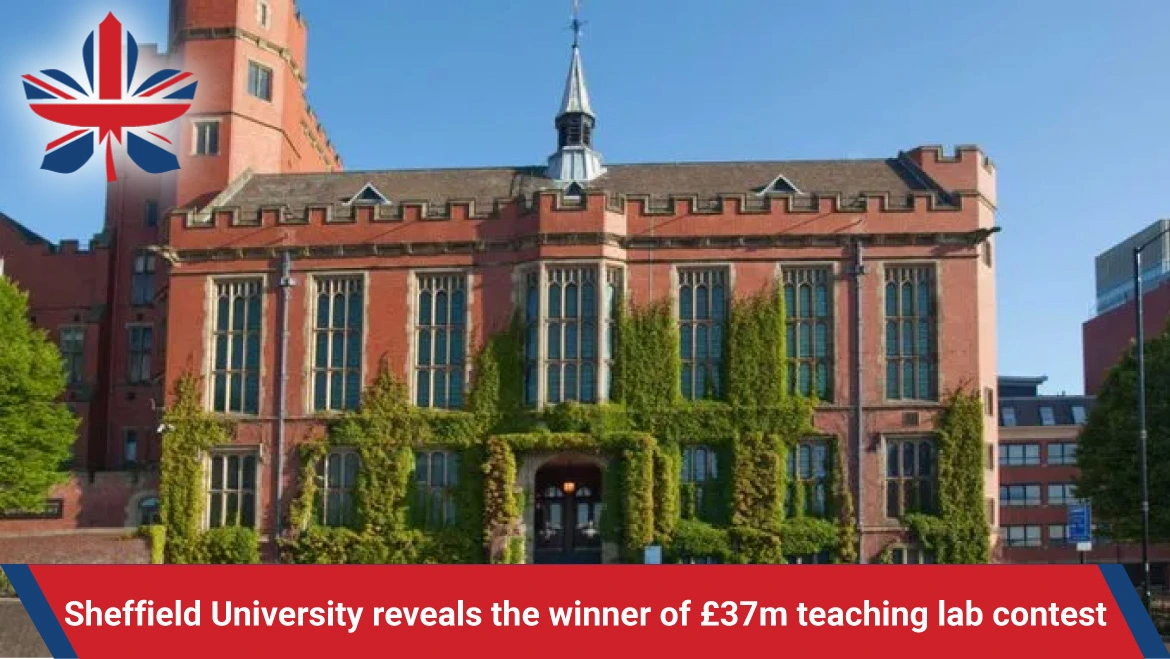Over 80% of University of Sheffield graduates continue into graduate-level work or further study, according to the yearly guide, ranking Sheffield 2nd in “The North” and 20th top university in the UK.
The rating uses the most recent data available within the last two months and includes profiles on 135 universities to provide the authoritative rankings for UK universities and the most thorough picture of higher education in Britain. The rating also revealed that the University’s students had a 93% completion rate.
In the most recent National Student Survey, students named the University of Sheffield courses as some of the finest in the nation (NSS). In the QS World University Rankings 2023, the University was also included as one of the top 100 institutions in the world, reiterating its status as a top institution of higher learning for both teaching and research quality. The University was additionally listed by Times Higher Education as one of the most international universities in the world.
Even though the University of Sheffield students have among of the lowest living expenses in the nation, the students may still be able to gain from the additional financial aid that they can offer. The university provides scholarships and bursaries to help students with the cost of their studies and to improve their educational opportunities.
British Dissertation Help, that is one of the best assignment help, and dissertation help, and other academic writing service-providing companies, brings you the news that the competition to design a £37 million Central Teaching Laboratory at the University of Sheffield was won by the Australian firm BVN Architecture and the London firm Twelve Architects (CTL).
Three years ago, a competition for a £2.5–3 million sustainable fuels centre at the university’s new Advanced Manufacturing Campus in Tinsley was won by Ridge and Partners.
A new focal point for the university’s main Western Bank Campus will be provided with the delivery of a 6,950m2 “flexible, multi-faceted teaching laboratory” on a corner site not far from the Information Commons library, which was designed by RMJM. In the restricted competition, the team was one of three shortlisted candidates. For taking part in the second phase, each participant got a £25,000 honorarium. The names of the other two finalists are unknown.
The team stated its winning design was picked for its student-first model, which proposes a succession of super-labs alongside ‘sticky space’ where students and staff may engage, collaborate, and learn, though photographs of their outline concept sketch have not yet been made public.
Green areas and biophilic design are also incorporated into the plan, which uses renewable energy sources for both construction and operation. The project is expected to be finished in 2026.
The £81 million The Diamond structure for the Faculty of Engineering, which was built in 2015, was the location of Twelve Architects’ first completed UK project.
The Thomas Street Science Building at UTS in Sydney and The Diamond, both designed by Twelve Architects, have proven to be extremely successful student-first models, according to Lorraine Stoutt Griffith, director of Twelve Architects.
In partnership with BVN, they have developed a design that will help the university achieve its goal of being a global leader in the instruction of science and associated topics. To ensure that all forms of teaching and learning are supported, special consideration has been given to the organisation of the various types of space within the building.
The proposed structure, according to BVN principal Matthew Blair, will provide students and faculty with a brand-new kind of lab experience. He expressed excitement about developing an encounter that will be appealing to kids from all over the world. For them, innovation comes from considering something in a unique way, paying attention to what others have to say, and challenging the current quo.
They said that by using these ideas, they could develop a setting where individuals feel a sense of connection and belonging, where students and researchers can work together, and possibly even where the next Nobel Prize winners will be discovered.
The University of Sheffield, which was selected the UK University of the Year by The Times ten years ago, has about 27,000 full-time and part-time students from 143 different countries. The most recent competition occurs three years after Feilden Clegg Bradley Studios and HLM won an £85 million pair of significant mixed-use regeneration projects in the neighbouring city centre, with one of those projects currently approaching completion.
Within Sheffield’s main campus, notable structures include RMJM’s Information Commons, which was completed in 2007, and GMW’s 78-meter-tall Arts Tower.

